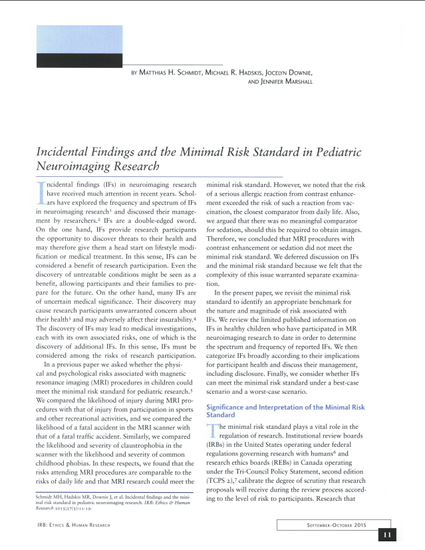
- Ethics,
- Pediatric,
- Neuroimaging,
- Incidental Findings,
- MRIs,
- Medical Research
In the present paper, we revisit the minimal risk standard to identify an appropriate benchmark for the nature and magnitude of risk associated with incidental findings (IFs). We review the limited published information on IFs in healthy children who have participated in magnetic resonance (MR) neuroimaging research to date in order to determine the spectrum and frequency of reported IFs. We then categorize IFs broadly according to their implications for participant health and discuss their management, including disclosure. We conclude that IFs in pediatric MR neuroimaging research can meet the minimal risk standard in the best-case scenario, but not in the worst-case scenario. The true risk associated with IFs likely lies somewhere between these two extremes, with IFs distributed among the categories of benefit, minor harm, and major harm in as-yet-unknown proportions. Much depends on the imaging protocol that researchers use and the degree of scrutiny to which they subject images. Much also depends on their approach to management, including diagnosis, disclosure, and referral.

IRB: Ethics & Human Research © 2015 The Hastings Center